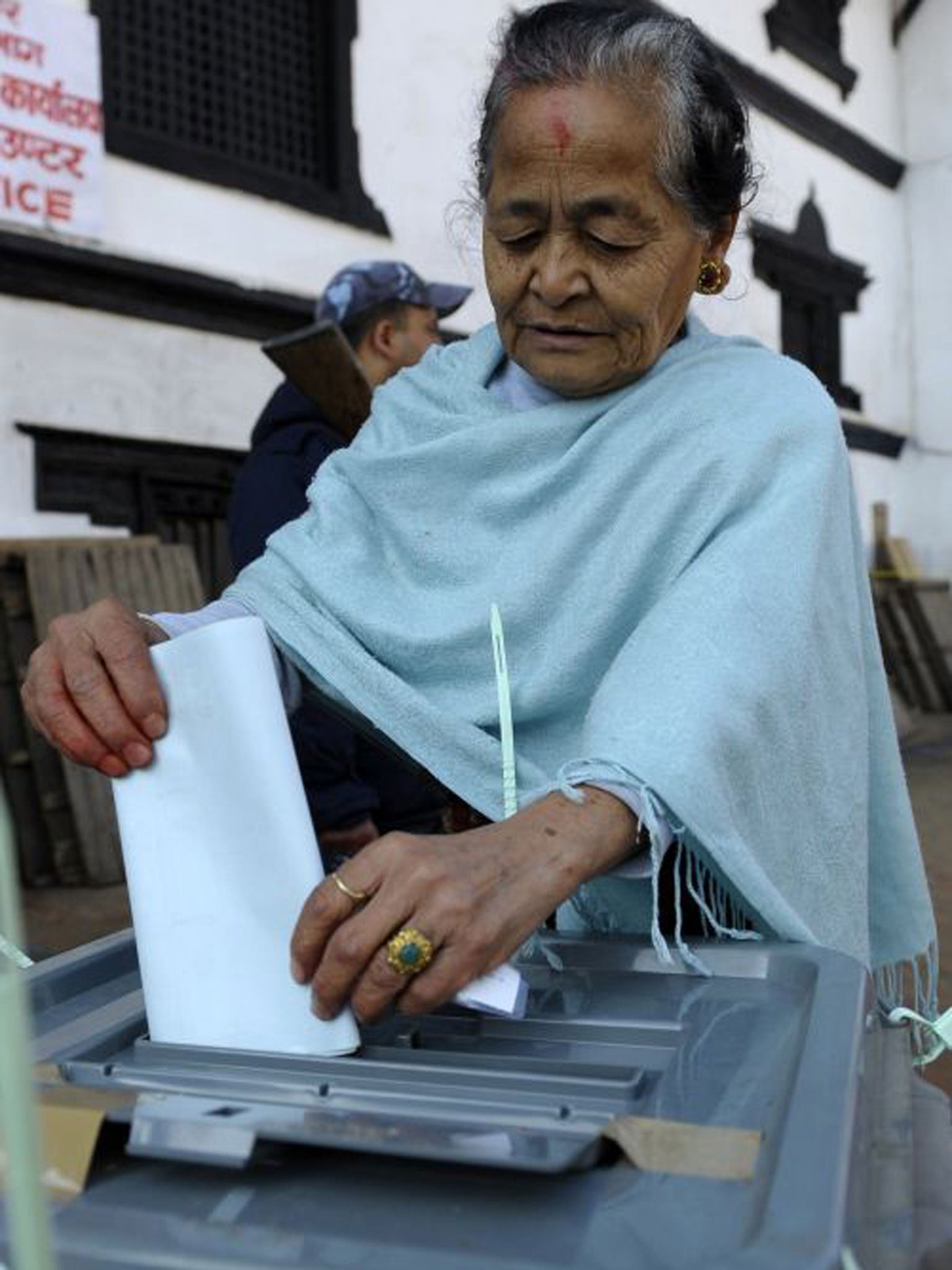Postcard from... Nepal

For once, the usually congested roads of Kathmandu were empty of cars and motorbikes – no traffic jams, no honking, no near-fatalities. Tuesday was the general election in Nepal, and not even a bicycle was allowed on the road, partly out of fear that people might travel around and vote more than once.
The only exceptions were those on official election business, so I hitched a lift on an election monitor’s motorbike. He took full advantage of the congestion-free streets and hurtled through the capital at eye-watering speeds.
But the streets were far from empty. At every polling station, hundreds milled around enjoying the festive atmosphere that attends Nepal’s still-nascent democracy.
We headed into the countryside, an awe-inspiring landscape of stepped gardens on steep mountain sides, the Himalayas in the background.
What seemed like the entire hamlet of Bhotechaur had gathered around the polling station. One college teacher quoted Abraham Lincoln at me: “We believe in government of the people, by the people and for the people.” He scoffed at the hardline Maoist faction that had tried to derail this election with a series of violent attacks over the past week.
And so did the rest of the country: voters turned up in record numbers with results due in the coming days.
Nepal has never had a government complete its term and has struggled to forge a new constitution for five years since the monarchy was abolished. But by snubbing the militants, Nepal took a major step towards peace and democracy.
Join our commenting forum
Join thought-provoking conversations, follow other Independent readers and see their replies
Comments
Bookmark popover
Removed from bookmarks